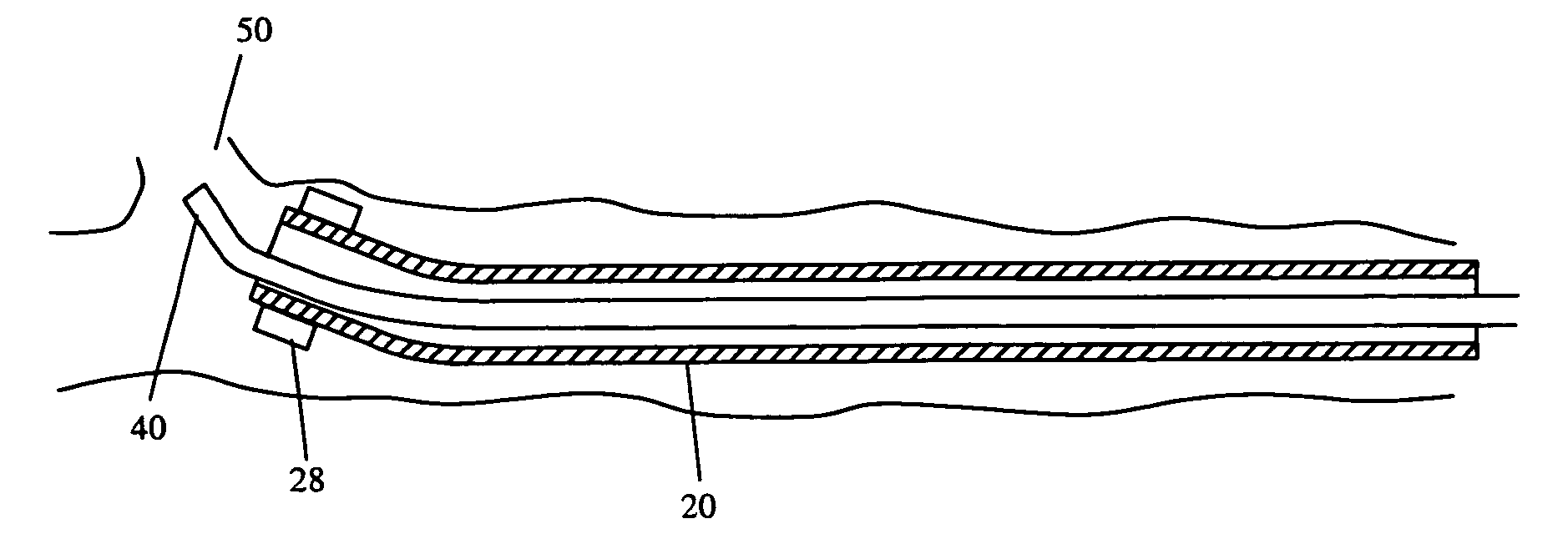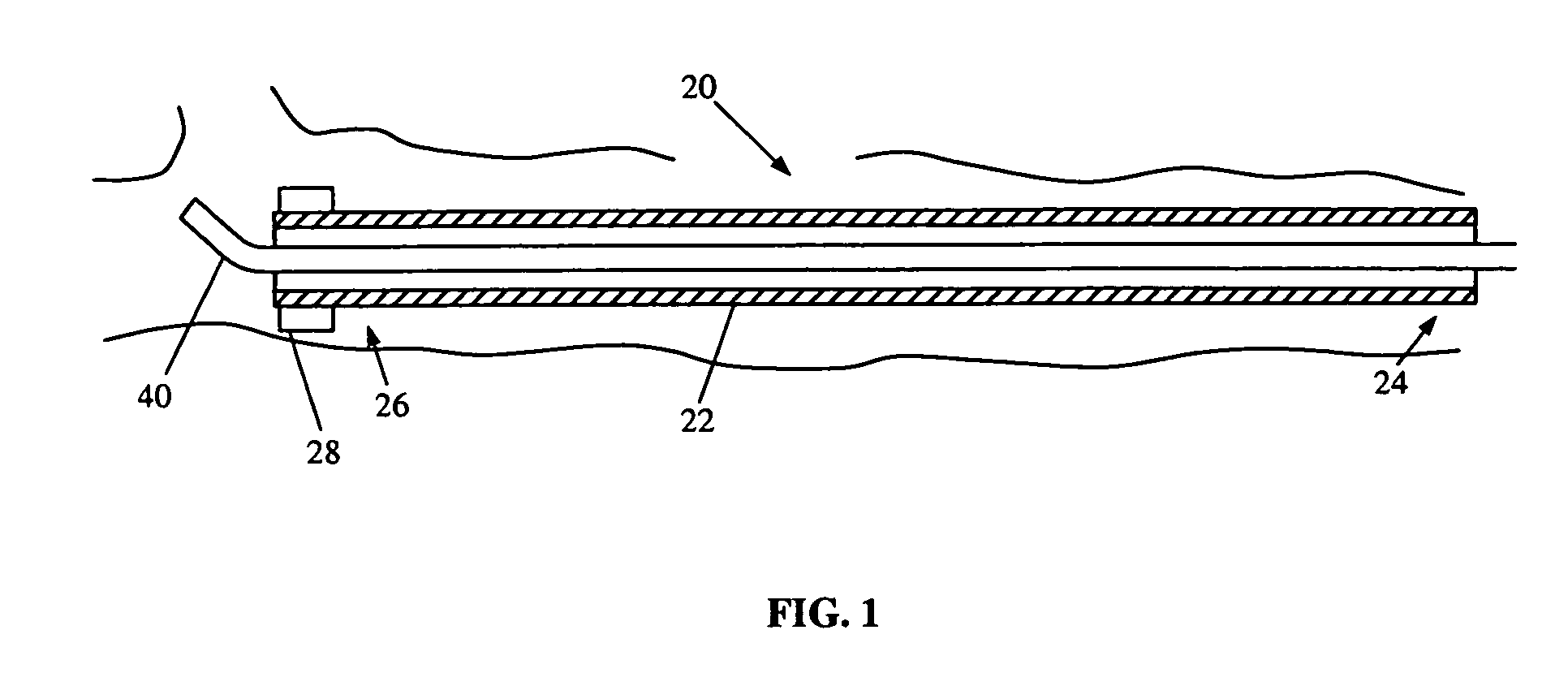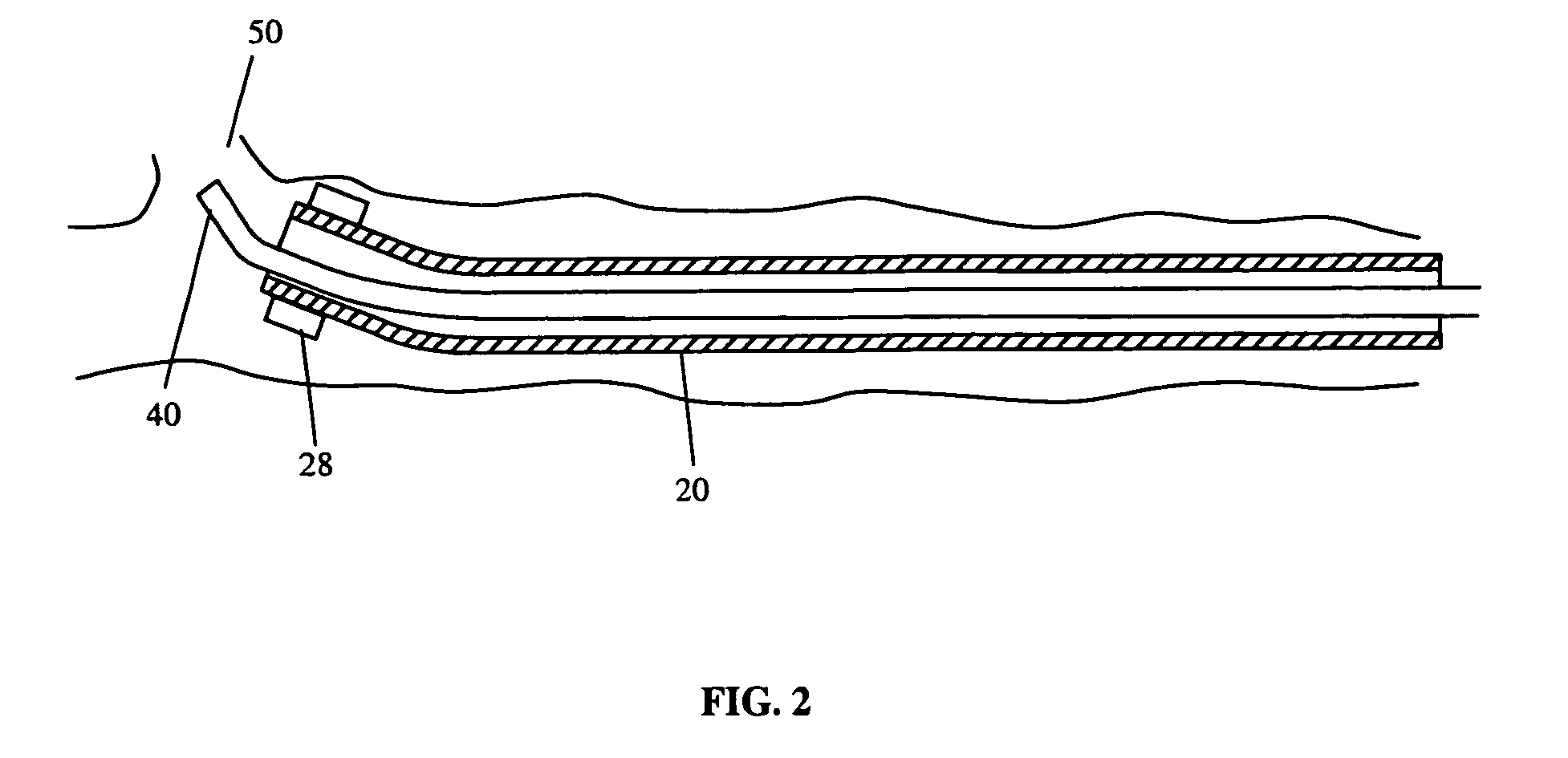Magnetic navigation maneuvering sheath
a magnetic navigation and maneuvering technology, applied in the field of guide catheters, can solve problems such as vessel injuries
- Summary
- Abstract
- Description
- Claims
- Application Information
AI Technical Summary
Benefits of technology
Problems solved by technology
Method used
Image
Examples
Embodiment Construction
[0011] A preferred embodiment of an apparatus for magnetically establishing placement of the distal end of a guide catheter or other thru-lumen catheters, solid catheters, such as Electrophysiology catheters and multi-lumen tubing to a target location within a subject body in accordance with the principles of the present invention is indicated generally as 20 in FIG. 1. The apparatus 20 comprises a flexible sheath 22 having a proximal end 24 and a distal end 26, and a lumen therebetween. The flexible sheath 22 is preferably made of Pebax, Polyolefins, Polyurethane, Nylon, PET, Silicone, PTFE, polymer blends or other thermoplastic polymers but may alternatively be made from thermoplastic enhanced with braids and / or coils or other material providing suitable flexibility. The lumen through the sheath has inside diameter sufficient for accepting a typical guide catheter or other thru-lumen catheters, solid catheters, such as Electrophysiology catheters and multi-lumen tubing through the...
PUM
 Login to View More
Login to View More Abstract
Description
Claims
Application Information
 Login to View More
Login to View More - R&D
- Intellectual Property
- Life Sciences
- Materials
- Tech Scout
- Unparalleled Data Quality
- Higher Quality Content
- 60% Fewer Hallucinations
Browse by: Latest US Patents, China's latest patents, Technical Efficacy Thesaurus, Application Domain, Technology Topic, Popular Technical Reports.
© 2025 PatSnap. All rights reserved.Legal|Privacy policy|Modern Slavery Act Transparency Statement|Sitemap|About US| Contact US: help@patsnap.com



